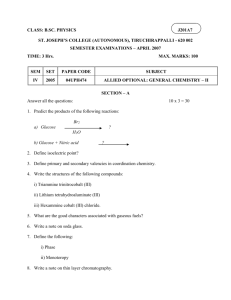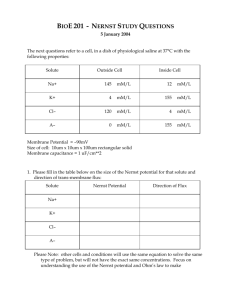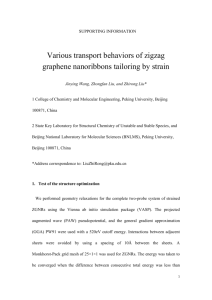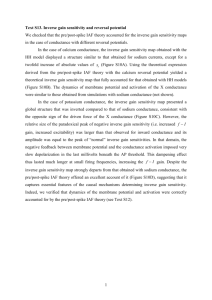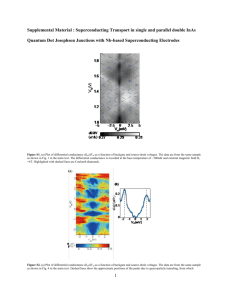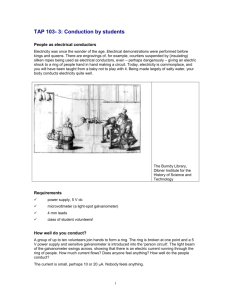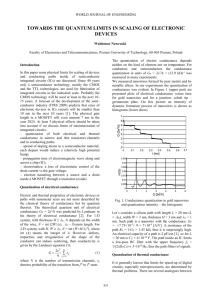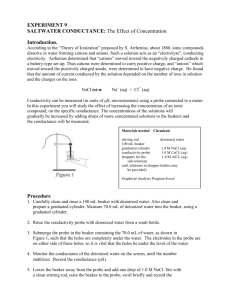2012_Cartoixa_Xavier_jlroldan@phantomsnet
advertisement
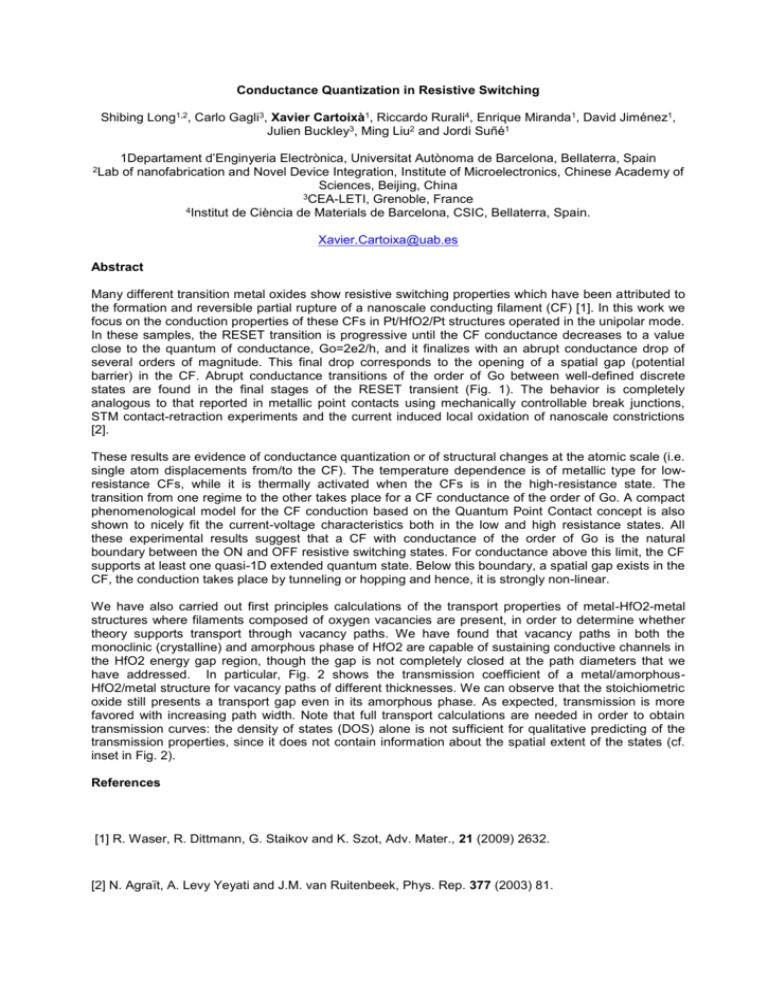
Conductance Quantization in Resistive Switching Shibing Long1,2, Carlo Gagli3, Xavier Cartoixà1, Riccardo Rurali4, Enrique Miranda1, David Jiménez1, Julien Buckley3, Ming Liu2 and Jordi Suñé1 2Lab 1Departament d’Enginyeria Electrònica, Universitat Autònoma de Barcelona, Bellaterra, Spain of nanofabrication and Novel Device Integration, Institute of Microelectronics, Chinese Academy of Sciences, Beijing, China 3CEA-LETI, Grenoble, France 4Institut de Ciència de Materials de Barcelona, CSIC, Bellaterra, Spain. Xavier.Cartoixa@uab.es Abstract Many different transition metal oxides show resistive switching properties which have been attributed to the formation and reversible partial rupture of a nanoscale conducting filament (CF) [1]. In this work we focus on the conduction properties of these CFs in Pt/HfO2/Pt structures operated in the unipolar mode. In these samples, the RESET transition is progressive until the CF conductance decreases to a value close to the quantum of conductance, Go=2e2/h, and it finalizes with an abrupt conductance drop of several orders of magnitude. This final drop corresponds to the opening of a spatial gap (potential barrier) in the CF. Abrupt conductance transitions of the order of Go between well-defined discrete states are found in the final stages of the RESET transient (Fig. 1). The behavior is completely analogous to that reported in metallic point contacts using mechanically controllable break junctions, STM contact-retraction experiments and the current induced local oxidation of nanoscale constrictions [2]. These results are evidence of conductance quantization or of structural changes at the atomic scale (i.e. single atom displacements from/to the CF). The temperature dependence is of metallic type for lowresistance CFs, while it is thermally activated when the CFs is in the high-resistance state. The transition from one regime to the other takes place for a CF conductance of the order of Go. A compact phenomenological model for the CF conduction based on the Quantum Point Contact concept is also shown to nicely fit the current-voltage characteristics both in the low and high resistance states. All these experimental results suggest that a CF with conductance of the order of Go is the natural boundary between the ON and OFF resistive switching states. For conductance above this limit, the CF supports at least one quasi-1D extended quantum state. Below this boundary, a spatial gap exists in the CF, the conduction takes place by tunneling or hopping and hence, it is strongly non-linear. We have also carried out first principles calculations of the transport properties of metal-HfO2-metal structures where filaments composed of oxygen vacancies are present, in order to determine whether theory supports transport through vacancy paths. We have found that vacancy paths in both the monoclinic (crystalline) and amorphous phase of HfO2 are capable of sustaining conductive channels in the HfO2 energy gap region, though the gap is not completely closed at the path diameters that we have addressed. In particular, Fig. 2 shows the transmission coefficient of a metal/amorphousHfO2/metal structure for vacancy paths of different thicknesses. We can observe that the stoichiometric oxide still presents a transport gap even in its amorphous phase. As expected, transmission is more favored with increasing path width. Note that full transport calculations are needed in order to obtain transmission curves: the density of states (DOS) alone is not sufficient for qualitative predicting of the transmission properties, since it does not contain information about the spatial extent of the states (cf. inset in Fig. 2). References [1] R. Waser, R. Dittmann, G. Staikov and K. Szot, Adv. Mater., 21 (2009) 2632. [2] N. Agraït, A. Levy Yeyati and J.M. van Ruitenbeek, Phys. Rep. 377 (2003) 81. Figures Normalized conductance of CF (Gcf/G0) 5 4.5 4 3.5 3 2.5 2 1.5 1 0.5 0.5 0.6 0.7 0.8 0.9 Applied voltage (V) 1 1.1 1.2 Fig. 1. Evolution of CF conductance in the last stage of 100 switching successive RESET cycles of Pt/HfO2/Pt capacitors. Discrete levels at Go, 2Go are revealed. If plotted in a conductance histogram, peaks at 3Go and 4Go also become evident. Fig. 2. Transmission coefficient for a metal/amorphous-HfO2/metal structure for vacancy paths of different diameters. The inset overlaps the transmission curve and the density of states (DOS) for the structure with the widest vacancy path.

